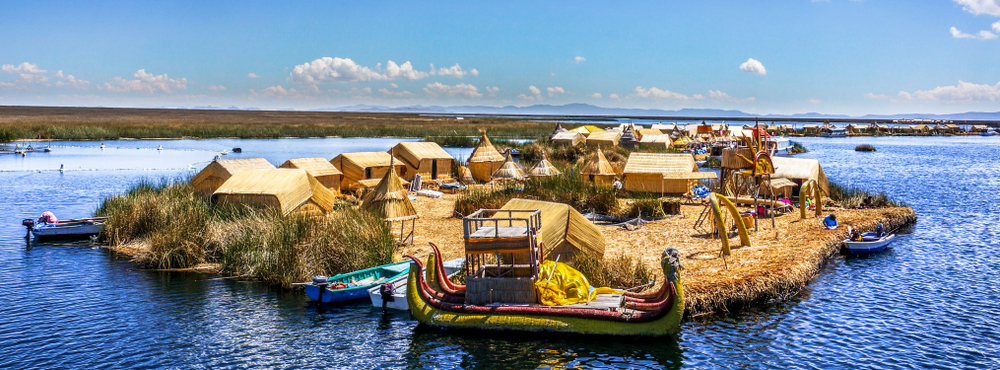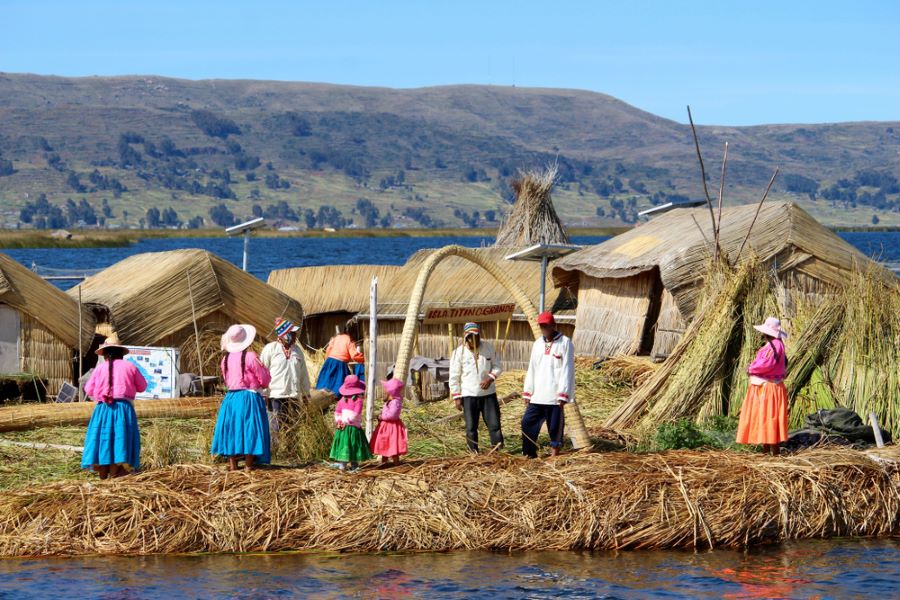Lake Titicaca, situated on the border between Peru and Bolivia, is one of the most mesmerizing high-altitude lakes in the world, famed not only for its breathtaking landscapes but also for its extraordinary floating islands. These islands are the product of the Uros people, a pre-Incan civilization that, centuries ago, took to the water to create a unique way of life on artificial islands. Constructed entirely from the lake’s totora reeds, these islands continue to serve as both home and sanctuary for the Uros, preserving traditions that have evolved over generations.

Uros Island, Lake Titicaca
The history of the Uros islands reaches deep into the past. The Uros people originally built these islands to isolate themselves from rival tribes on the mainland, seeking refuge from conflict and to maintain their own customs and culture. Creating the islands took ingenuity—totora reeds are woven into dense, layered platforms that can float, secured by anchor stones to prevent them from drifting. As the reeds naturally deteriorate, the Uros continuously lay fresh layers on top, maintaining the buoyancy and stability of their floating homes. This sustainable practice keeps the islands viable and resilient, a testament to the resourcefulness that’s sustained the Uros way of life for centuries.
The floating islands lie within Lake Titicaca’s Peruvian side near the town of Puno, which serves as the primary gateway for travelers eager to visit. From Puno, it’s a short boat journey to the islands, providing visitors with an ever-changing view of the lake and distant Andean mountains. Local guides, often Uros people themselves, bring cultural context to the boat ride, explaining the history and intricate craftsmanship behind the islands. As the islands come into view, the unique structures, reed boats, and vibrant attire of the Uros add a colorful contrast to the vast blue of the lake, making the journey as striking as the destination itself.
You Might Also Enjoy: Offbeat Travel: The Nazca Lines in Perú

Floating Island Village, Lake Titicaca
Arriving at the floating islands, visitors are welcomed onto the reed platforms with a warm sense of hospitality that defines the Uros people. This introduction to the islands often includes demonstrations of traditional crafts, fishing techniques, and the day-to-day lifestyle of the residents. These moments provide insight into how the Uros balance their ancient customs with the present day; while some islands now feature solar panels to power small electronics, much of the traditional lifestyle remains intact, blending modern convenience with time-honored practices. The reed boats, often adorned with decorative elements and shaped like mythical creatures, are another fascinating part of the Uros’ culture. Some visitors may have the opportunity to board these boats for a short ride, giving a deeper sense of how the Uros have learned to live symbiotically with their surroundings.
For travelers, the floating islands offer more than just a picturesque experience; they provide a profound connection to an ancient way of life. While tourism brings modern economic support to the Uros, it also fosters cultural exchange, allowing visitors to learn directly from the descendants of one of the oldest lake-dwelling civilizations in the world. Those who visit the islands often leave with a greater appreciation for the resilience and adaptability of the Uros, who, despite the challenges of living in such an unconventional environment, have safeguarded their traditions and skills against the tide of change.
Have you ever see the Uros Islands up close? Tell us about it in the comments below!


Leave a Reply